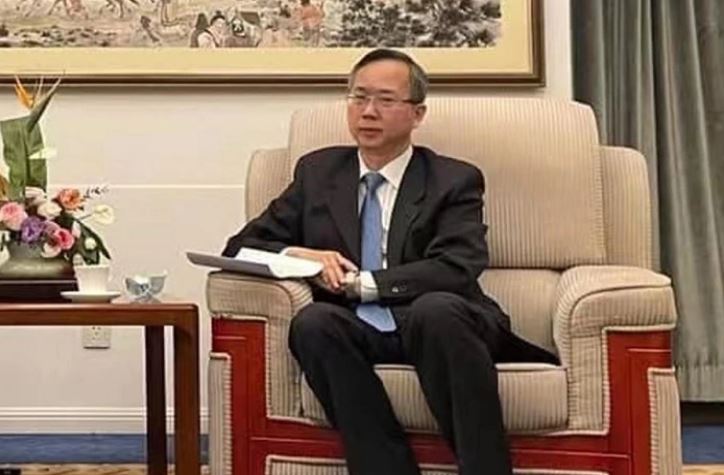ONS report also said an estimated 35,000 people arrived across the English Channel in small boats in the year ending in June 2022. But earlier this month that figure was put at more than 40,000 according to data released by the Ministry of Defence…reports Asian Lite News
An estimated 504,000 more people came to the UK than left last year, a figure greater than the population of Liverpool.
It smashes the previous post-war net migration high of 329,000 set in 2015. Office for National Statistics (ONS) data shows that in total more than a million people arrived in the country last year.
The report also said an estimated 35,000 people arrived across the English Channel in small boats in the year ending in June 2022. But earlier this month that figure was put at more than 40,000 according to data released by the Ministry of Defence.
The gross number of people who arrived in the UK was estimated at 1.1 million.
Though ONS figures only stretch back to 1964, analysis of census records shows that there was generally a net decrease of people from the UK until the 1990s, at which point the trend reversed and more started arriving rather than leaving.
According to the ONS, the bulk of the increase was driven by students arriving to study. A total of 487,000 student visas were issued in the year to June 2022, an increase of 71%.
The number of people granted asylum in the UK in the year to June 2022 was 24% lower than in 2019, despite there having been a 77% increase in applications.
A total of 63,089 applications for asylum were made – the highest since 2003 and 75% higher than during the peak of the European Migration Crisis in 2016.
Work visas increased by 72% compared with last comparable pre-pandemic data in 2019, with 331,000 issued in the year to June 2022.
The numbers were also bolstered by people fleeing the war in Ukraine, with more than 170,000 visas issued to Ukrainian nationals.
About 28,000 British nationals overseas status holders from Hong Kong came to the country, under a scheme launched in January 2021 to help them escape potential persecution. A separate resettlement programme to help people flee Afghanistan saw 21,000 people arrive.
During the same period a total of 45,000 British nationals left the UK.
Jay Lindop, director of the Centre for International Migration at the ONS, said: “A series of world events have impacted international migration patterns in the 12 months to June 2022.
“Taken together these were unprecedented. These include the end of lockdown restrictions in the UK, the first full period following transition from the EU, the war in Ukraine, the resettlement of Afghans and the new visa route for Hong Kong British nationals (Overseas), which have all contributed to the record levels of long-term immigration we have seen.”
Foreign students entering Britain after the easing of pandemic lockdown curbs was another factor, finance minister Jeremy Hunt noted.
Hunt said his austere budget plans announced last week would help “forge a different economy outside the European Union — high skill, high wage, the world’s next Silicon Valley, and with our own regulations”.
“And I believe we can do that because I think we’ve got an incredible country,” he added.
Anti-EU “leave” campaigners based their Brexit campaign on a promise to “take back control” from Brussels.
But ahead of the latest migration figures, interior minister Suella Braverman on Wednesday admitted the government had “failed to control our borders”.
The hardline Brexiteer vowed anew to tackle the issue of record numbers of migrants crossing the Channel from France.
But she struggled to explain to MPs how would-be asylum seekers fleeing war and persecution could now enter Britain legally.

Meanwhile, her ministry on Thursday released annual statistics showing more than 140,000 asylum seekers are now awaiting a decision — an increase of over 20,000 in three months.
Interior ministry figures for the year to September show there were 143,377 asylum applications needing determination, of which 97,717 had been waiting for over six months.
Some 85,902 people had applied in that year-long period, the highest number for almost two decades and almost double the number in the year to September, 2019.
ALSO READ-‘Trade talks with India not conditional on illegal migration’














